Properties of Skin Collagen from Southern Catfish (Silurus meridionalis) Fed with Raw and Cooked Food
Abstract
1. Introduction
2. Materials and Methods
2.1. Sample Collection and Processing
2.2. Isolation and Purification of Collagen
2.3. Sodium Dodecyl Sulfate Polyacrylamide Gel Electrophoresis (SDS-PAGE)
2.4. Circular Dichroism (CD) Measurement
2.5. Attenuated Total Reflectance Fourier Transform Infrared (ATF-FTIR) Spectroscopy
2.6. Antioxidant Activity
2.7. Collagen Fibril Formation In Vitro
2.8. Determination of Collagen Fibrils Formed In Vitro
2.9. Analysis of the Expression of Genes Related to Collagen Synthesis
2.9.1. Total RNA Extraction, Purification, and Complementary DNA (cDNA) Synthesis
2.9.2. Real-Time PCR (RT-PCR) Expression Assay
2.10. Statistical Analysis
3. Results and Discussion
3.1. Yields of Collagen
3.2. SDS-PAGE
3.3. ATR-FTIR
3.4. Thermal Stability
3.5. DPPH Free Radical Scavenging Capacity
3.6. Collagen In Vitro Fibril Formation
3.7. Morphology of Collagen Fibrils Formed In Vitro
3.8. Collagen Synthesis-Related Gene Expression
4. Conclusions
Author Contributions
Funding
Institutional Review Board Statement
Informed Consent Statement
Data Availability Statement
Conflicts of Interest
References
- Nóbrega, C.T.; Guimarães, C.C.; Barai, A.A.; Mourão, L.S.; Oliveira, P.R.; Inhamuns, A.J.; Oliveira, A.T. Yield and centesimal characterization of collagen extracted from the skin of peacock bass Cichla monoculus. Braz. J. Biol. Rev. Brasleira Biol. 2024, 84, e277637. [Google Scholar] [CrossRef]
- Geng, Y.; Wang, Y.-K.; Li, W.-C.; Ren, Y.-S.; Zhou, Y.-Z.; Liu, X.-X.; Liu, F.-X.; Lai, M.-W.; Huang, L.-X.; Chen, F.-D. Isolation and Characterization of Edwardsiella ictaluri from Southern Catfish, Silurus soldatovi meridionalis, (Chen) Cultured in China. J. World Aquac. Soc. 2013, 44, 273–281. [Google Scholar] [CrossRef]
- He, C.-Q.; Geng, H.-Y.; Qin, Y.-W.; Yang, P.; Wang, W.-Q.; Mai, K.-S.; Song, F. Dietary xanthophyll improved growth, antioxidant, pigmentation and meat quality in the southern catfish (Silurus soldatovi meridionalis Chen). Anim. Nutr. 2023, 13, 101–115. [Google Scholar] [CrossRef]
- Zhang, Z.; Li, D. Thermal processing of food reduces gut microbiota diversity of the host and triggers adaptation of the microbiota: Evidence from two vertebrates. Microbiome 2018, 6, 99. [Google Scholar] [CrossRef] [PubMed]
- Zhang, Z.; Xu, W.; Tang, R.; Li, L.; Refaey, M.M.; Li, D. Thermally processed diet greatly affects profiles of amino acids rather than fatty acids in the muscle of carnivorous Silurus meridionalis. Food Chem. 2018, 256, 244–251. [Google Scholar] [CrossRef] [PubMed]
- Domingues, P.M.; Marquez, L.; López, N.; Rosas, C. Effects of food thermal treatment on growth, absorption, and assimilation efficiency of juvenile cuttlefish (Sepia officinalis). Aquac. Int. 2008, 17, 283–299. [Google Scholar] [CrossRef]
- Muyonga, J.H.; Cole, C.G.B.; Duodu, K.G. Characterisation of acid soluble collagen from skins of young and adult Nile perch (Lates niloticus). Food Chem. 2003, 85, 81–89. [Google Scholar]
- Mouw, J.K.; Ou, G.; Weaver, V.M. Extracellular matrix assembly: A multiscale deconstruction. Nat. Rev. Mol. Cell Bio 2014, 15, 771–785. [Google Scholar] [CrossRef]
- Darvish, D.M. Collagen fibril formation in vitro: From origin to opportunities. J. Mater. Today Bio. 2022, 15, 100322. [Google Scholar] [CrossRef]
- Yan, M.; Wang, X. Study on the kinetic self-assembly of type I collagen from tilapia (Oreochromis niloticus) skin using the fluorescence probe thioflavin T. Spectrochim. Acta Part A Mol. Biomol. Spectrosc. 2018, 203, 342–347. [Google Scholar] [CrossRef]
- Bae, I.; Osatomi, K.; Yoshida, A.; Yamaguchi, A.; Tachibana, K.; Oda, T.; Hara, K. Characteristics of a self-assembled fibrillar gel prepared from red stingray collagen. Fish. Sci. 2009, 75, 765–770. [Google Scholar] [CrossRef][Green Version]
- Yunoki, S.; Nagai, N.; Suzuki, T.; Munekata, M. Novel biomaterial from reinforced salmon collagen gel prepared by fibril formation and cross-linking. J. Biosci. Bioeng. 2004, 98, 40–47. [Google Scholar] [CrossRef]
- Hafez, J.; Alberto, L.; Mafosso, M.S.; Pejman, G.; Lei, N.; Houman, A.; Amin, S. Fish Collagen: Extraction, Characterization, and Applications for Biomaterials Engineering. Polymers 2020, 12, 2230. [Google Scholar] [CrossRef] [PubMed]
- Santos, D.V.W.C.; Marques, C.D.E.M.; Tenório, A.D.H.; Miranda, D.C.E.; Pereira, V.J.H. Purification and characterization of trypsin from Luphiosilurus alexandri pyloric cecum. Biochem. Biophys. Rep. 2016, 8, 29–33. [Google Scholar] [CrossRef] [PubMed][Green Version]
- dos Santos, D.M.R.C.; dos Santos, C.W.V.; de Souza, C.B.; de Albuquerque, F.S.; dos Santos Oliveira, J.M.; Pereira, H.J.V. Trypsin purified from Coryphaena hippurus (common dolphinfish): Purification, characterization, and application in commercial detergents. J. Biocatal. Agric. Biotechnol. 2020, 25, 101584. [Google Scholar]
- Fiala, T.; Barros, E.P.; Heeb, R.; Riniker, S.; Wennemers, H. Predicting Collagen Triple Helix Stability through Additive Effects of Terminal Residues and Caps. Angew. Chem. 2022, 62, e202214728. [Google Scholar] [CrossRef] [PubMed]
- Terzi, A.; Gallo, N.; Bettini, S.; Sibillano, T.; Altamura, D.; Madaghiele, M.; De Caro, L.; Valli, L.; Salvatore, L.; Sannino, A.; et al. Sub- and Supramolecular X-ray Characterization of Engineered Tissues from Equine Tendon, Bovine Dermis, and Fish Skin Type-I Collagen. Macromol. Biosci. 2020, 20, e2000017. [Google Scholar] [CrossRef]
- Zahra, K.; Baharifar, H.; Asefnejad, A.; Khoshnevisan, K. Collagen type I cross-linked to gelatin/chitosan electrospun mats: Application for skin tissue engineering. J. Mater. Today Commun. 2023, 35, 105889. [Google Scholar]
- Jakub, H.; Paweł, K.R.; Christiane, K.K.; Kamil, J.; Izabela, N.H.; Marzena, D.; Gedrange, T. A silver carp skin derived collagen in bone defect treatment—A histological study in a rat mode. J. Ann. Anat. 2016, 208, 123–128. [Google Scholar]
- Shen, Z.; Zhang, Q.; Li, L.; Li, D.; Takagi, Y.; Zhang, X. Properties of Grass Carp (Ctenopharyngodon idella) Collagen and Gel for Application in Biomaterials. Gels 2022, 8, 699. [Google Scholar] [CrossRef]
- Ogawa, M.; Moody, M.W.; Portier, R.J.; Bell, J.; Schexnayder, M.A.; Losso, J.N. Biochemical properties of black drum and sheepshead seabream skin collagen. J. Agric. Food Chem. 2003, 51, 8088–8092. [Google Scholar] [CrossRef] [PubMed]
- Chen, J.; Li, L.; Yi, R.; Xu, N.; Gao, R.; Hong, B. Extraction and characterization of acid-soluble collagen from scales and skin of tilapia (Oreochromis niloticus). LWT-Food Sci. Technol. 2016, 66, 453–459. [Google Scholar] [CrossRef]
- Jongjareonrak, A.; Benjakul, S.; Visessanguan, W. Isolation and characterisation of acid and pepsin-solubilised collagens from the skin of Brownstripe red snapper (Lutjanus vitta). Food Chem. 2004, 93, 475–484. [Google Scholar] [CrossRef]
- Nagai, T.; Araki, Y.; Suzuki, N. Collagen of the skin of ocellate puffer fish (Takifugu rubripes). Food Chem. 2002, 78, 173–177. [Google Scholar] [CrossRef]
- Zhang, M.; Liu, W.; Li, G. Isolation and characterisation of collagens from the skin of largefin longbarbel catfish (Mystus macropterus). Food Chem. 2009, 115, 826–831. [Google Scholar] [CrossRef]
- Nagai, T.; Tanoue, Y.; Kai, N.; Suzuki, N. Characterization of collagen from emu (Dromaius novaehollandiae) skins. J. Food Sci. Technol. 2014, 52, 2344–2351. [Google Scholar] [CrossRef]
- Eun, J.L.; SangKyu, N.; Jeong, M.K. Effects of Enzymatic- and Ultrasound-Assisted Extraction on Physicochemical and Antioxidant Properties of Collagen Hydrolysate Fractions from Alaska Pollack (Theragra chalcogramma) Skin. J. Antioxid. 2022, 11, 2112. [Google Scholar]
- Samaneh, P.; Masoud, R.; Mehdi, A. Impact of ultrasound on extractability of native collagen from tuna by-product and its ultrastructure and physicochemical attributes. J. Ultrason. Sonochem. 2022, 86, 89106129. [Google Scholar]
- Xu, S.; Yang, H.; Shen, L.; Li, G. Purity and yield of collagen extracted from southern catfish (Silurus meridionalis Chen) skin through improved pretreatment methods. Int. J. Food Prop. 2017, 20, S141–S153. [Google Scholar] [CrossRef]
- Gómez-Guillén, M.C.; Giménez, B.; López-Caballero, M.E.; Montero, M.P. Functional and bioactive properties of collagen and gelatine from alternative sources: A review. Food Hydrocoll. 2011, 25, 1813–1827. [Google Scholar] [CrossRef]
- Li, P.H.; Lu, W.C.; Chan, Y.J.; Ko, W.C.; Jung, C.C.; Le Huynh, D.T.; Ji, Y.X. Extraction and characterization of collagen from sea cucumber (Holothuria cinerascens) and its potential application in moisturizing cosmetics. Aquaculture 2020, 515, 734590. [Google Scholar] [CrossRef]
- Ge, B.L.; Hou, C.Y.; Bao, B.; Pan, Z.L.; Elango, J.; Wu, W.H. Comparison of Physicochemical and Structural Properties of Acid-Soluble and Pepsin-Soluble Collagens from Blacktip Reef Shark Skin. Mar. Drugs 2022, 20, 376. [Google Scholar] [CrossRef]
- Payne, K.J.; Veis, A. Fourier transform IR spectroscopy of collagen and gelatin solutions: Deconvolution of the amide I band for conformational studies. Biopolymers 1988, 27, 1749. [Google Scholar] [CrossRef] [PubMed]
- Kelly, S.M.; Price, N.C. The application of circular dichroism to studies of protein folding and unfolding. Biochim. Biophys. Acta 1997, 1338, 161–185. [Google Scholar] [CrossRef] [PubMed]
- Pornpimol, S.; Chompoonuch, K.; Jirawat, Y. Physicochemical Properties and Angiotensin I Converting Enzyme Inhibitory Peptides of Freshwater Fish Skin Collagens. J. Aquat. Food Product. Technol. 2020, 29, 650–660. [Google Scholar]
- Rodrigues Menezes, M.D.; Ribeiro, H.L.; da Silva Abreu, F.D.; de Andrade Feitosa, J.P.; Filho Men de Sa Moreira, S. Optimization of the collagen extraction from Nile tilapia skin (Oreochromis niloticus) and its hydrogel with hyaluronic acid. Colloids Surf. B Biointerfaces 2020, 189, 189110852. [Google Scholar]
- Usha, R.; Ramasami, T. Structure and conformation of intramolecularly cross-linked collagen. Colloids Surfaces B Biointerfaces 2005, 41, 21–24. [Google Scholar] [CrossRef]
- Iswariya, S.; Velswamy, P.; Uma, S.T. Isolation and Characterization of Biocompatible Collagen from the Skin of Puffer Fish (Lagocephalus inermis). J. Polym. Environ. 2018, 26, 2086–2095. [Google Scholar] [CrossRef]
- Khong, M.N.; Yusoff, M.F.; Jamilah, B.; Basri, M.; Maznah, I.; Chan, K.M.; Armania, N.; Nishikawa, J. Improved collagen extraction from jellyfish (Acromitus hardenbergi) with increased physical-induced solubilization processes. Food Chem. 2018, 251, 41–50. [Google Scholar] [CrossRef]
- Song, Z.-L.; Liu, H.-M.; Chen, L.-W.; Chen, L.-L.; Zhou, C.-X.; Hong, P.-Z.; Deng, C.-J. Characterization and comparison of collagen extracted from the skin of the Nile tilapia by fermentation and chemical pretreatment. Food Chem. 2021, 340, 128139. [Google Scholar] [CrossRef]
- Yoshida, K.; Fujita, S.; Matsusaki, M. Analysis of Homo- and Heterotriple Helix Formation of Collagen Model Peptides and Evaluation of Their Stability in a Biological Environment. Langmuir 2024, 40, 3823–3830. [Google Scholar] [CrossRef]
- Pal, K.G.; Suresh, P. Comparative assessment of physico-chemical characteristics and fibril formation capacity of thermostable carp scales collagen. J. Mater. Sci. Eng. C 2017, 70 Pt 1, 32–40. [Google Scholar] [CrossRef]
- Thongchai, K.; Chuysinuan, P.; Thanyacharoen, T.; Techasakul, S.; Ummartyotin, S. Integration of collagen into chitosan blend film composites: Physicochemical property aspects for pharmaceutical materials. SN Appl. Sci. 2020, 2, 172–188. [Google Scholar] [CrossRef]
- Zhang, X.; Adachi, S.; Ura, K.; Takagi, Y. Properties of collagen extracted from Amur sturgeon Acipenser schrenckii and assessment of collagen fibrils in vitro. Int. J. Biol. Macromol. 2019, 137, 809–837. [Google Scholar] [CrossRef] [PubMed]
- Sousa, R.O.; Alves, A.L.; Carvalho, D.N.; Martins, E.; Oliveira, C.; Silva, T.H.; Reis, L. Acid and enzymatic extraction of collagen from Atlantic cod (Gadus morhua) swim bladders envisaging health-related applications. J. Biomater. Sci. Polym. Ed. 2020, 31, 20–37. [Google Scholar] [CrossRef]
- Coelho, C.R.; Marques, L.A.; Oliveira, M.S.; Diogo, S.G.; Pirraco, P.R.; Joana, M.-S.; Xavier, C.J.; Reis, L.R.; Silva, H.T.; Mano, F.J. Extraction and characterization of collagen from Antarctic and Sub-Antarctic squid and its potential application in hybrid scaffolds for tissue engineering. J. Mater. Sci. Eng. C 2017, 787, 87–95. [Google Scholar] [CrossRef]
- Tian, Z.; Wu, K.; Liu, W.; Shen, L.; Li, G. Two-dimensional infrared spectroscopic study on the thermally induced structural changes of glutaraldehyde-crosslinked collagen. Spectrochim. Acta A Mol. Biomol. Spectrosc. 2015, 140, 356–363. [Google Scholar] [CrossRef]
- Mofieed, A.; Aashima, A.; Kumar, A.V. In-vitro self-assembly and antioxidant properties of collagen type I from Lutjanus erythropterus, and Pampus argenteus skin. J. Biocatal. Agric. Biotechnol. 2022, 43, 102412. [Google Scholar]
- Ardhani, F.; Safithri, M.; Tarman, K.; Husnawati; Setyaningsih, I.; Meydia. Antioxidant activity of collagen from skin of parang-parang fish (Chirocentrus dorab) using DPPH and CUPRAC methods. IOP Conf. Ser. Earth Environ. Sci. 2019, 241, 012032. [Google Scholar] [CrossRef]
- Chen, Y.; Jin, H.; Yang, F.; Jin, S.; Liu, C.; Zhang, L.; Huang, J.; Wang, S.; Yan, Z.; Cai, X.; et al. Physicochemical, antioxidant properties of giant croaker (Nibea japonica) swim bladders collagen and wound healing evaluation. Int. J. Biol. Macromol. 2019, 138, 483–491. [Google Scholar] [CrossRef]
- Meng, C.; Li, W. Effects of phosphate ion concentration on in-vitro fibrillogenesis of sturgeon type I collagen. Int. J. Biol. Macromol. 2020, 148, 182–191. [Google Scholar] [CrossRef] [PubMed]
- Shen, L.; Tian, Z.; Liu, W.; Li, G. Influence on the physicochemical properties of fish collagen gels using self-assembly and simultaneous cross-linking with the N-hydroxysuccinimide adipic acid derivative. Connect. Tissue Res. 2015, 56, 244–252. [Google Scholar] [CrossRef]
- Ishi, K.; Hoshi, H.; Takahashi, M.; Kitagawa, K.; Hoshi, M.; Kawaguchi, N. Collagen of porcine auricle has unique biochemical and biophysical characteristics. Soft Mater. 2019, 17, 170–180. [Google Scholar] [CrossRef]
- Zhang, X.; Ookawa, M.; Tan, Y.; Ura, K.; Adachi, S.; Takagi, Y. Biochemical characterisation and assessment of fibril-forming ability of collagens extracted from Bester sturgeon Huso huso × Acipenser ruthenus. Food Chem. 2014, 160, 305–312. [Google Scholar] [CrossRef] [PubMed]
- Yu, E.M.; Liu, B.H.; Wang, G.J.; Yu, D.G.; Xie, J.; Xia, Y.; Wei, N. Molecular cloning of type I collagen cDNA and nutritional regulation of type I collagen mRNA expression in grass carp. J. Anim. Physiol. Anim. Nutr. 2013, 98, 755–765. [Google Scholar] [CrossRef] [PubMed]


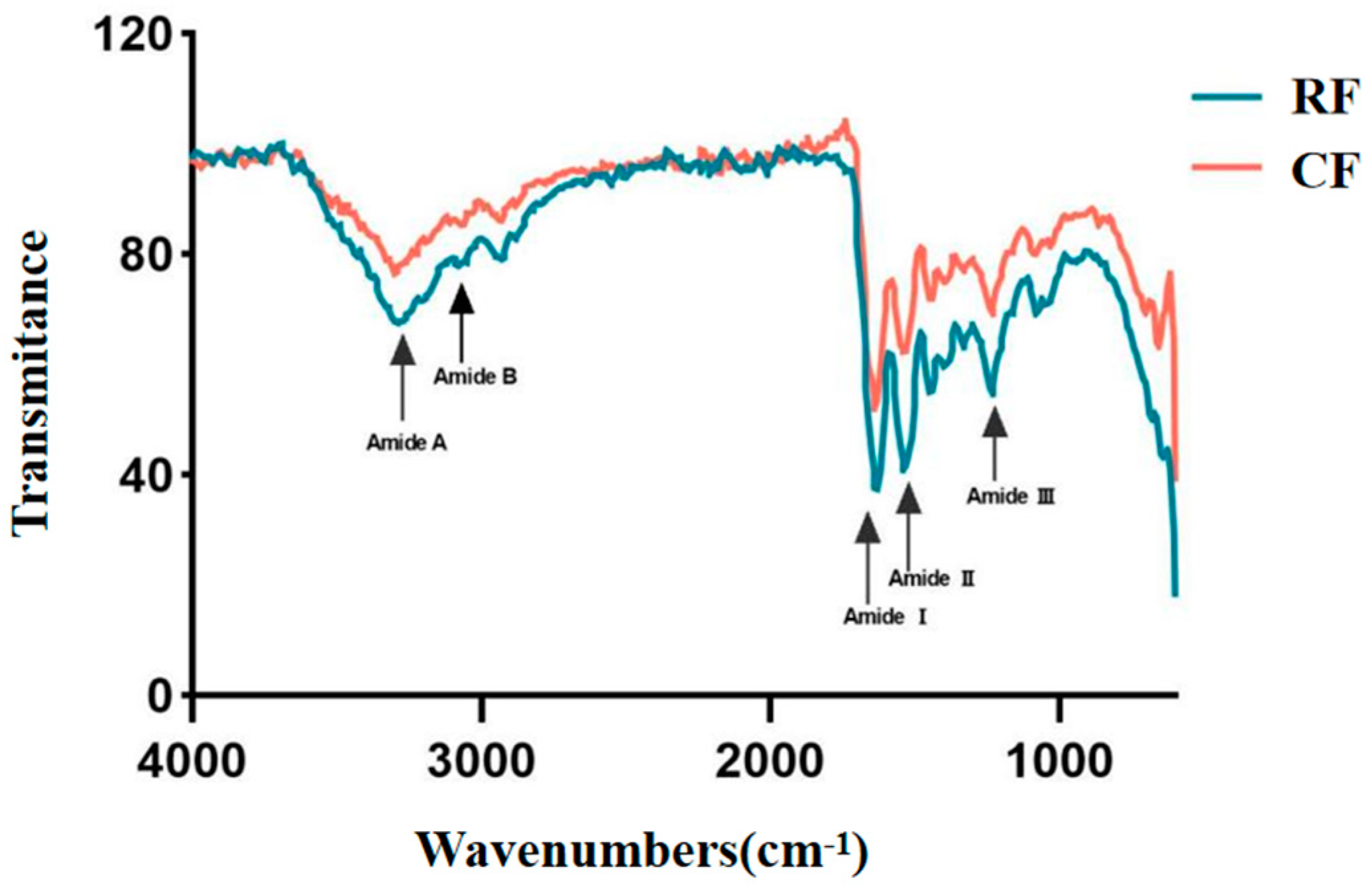
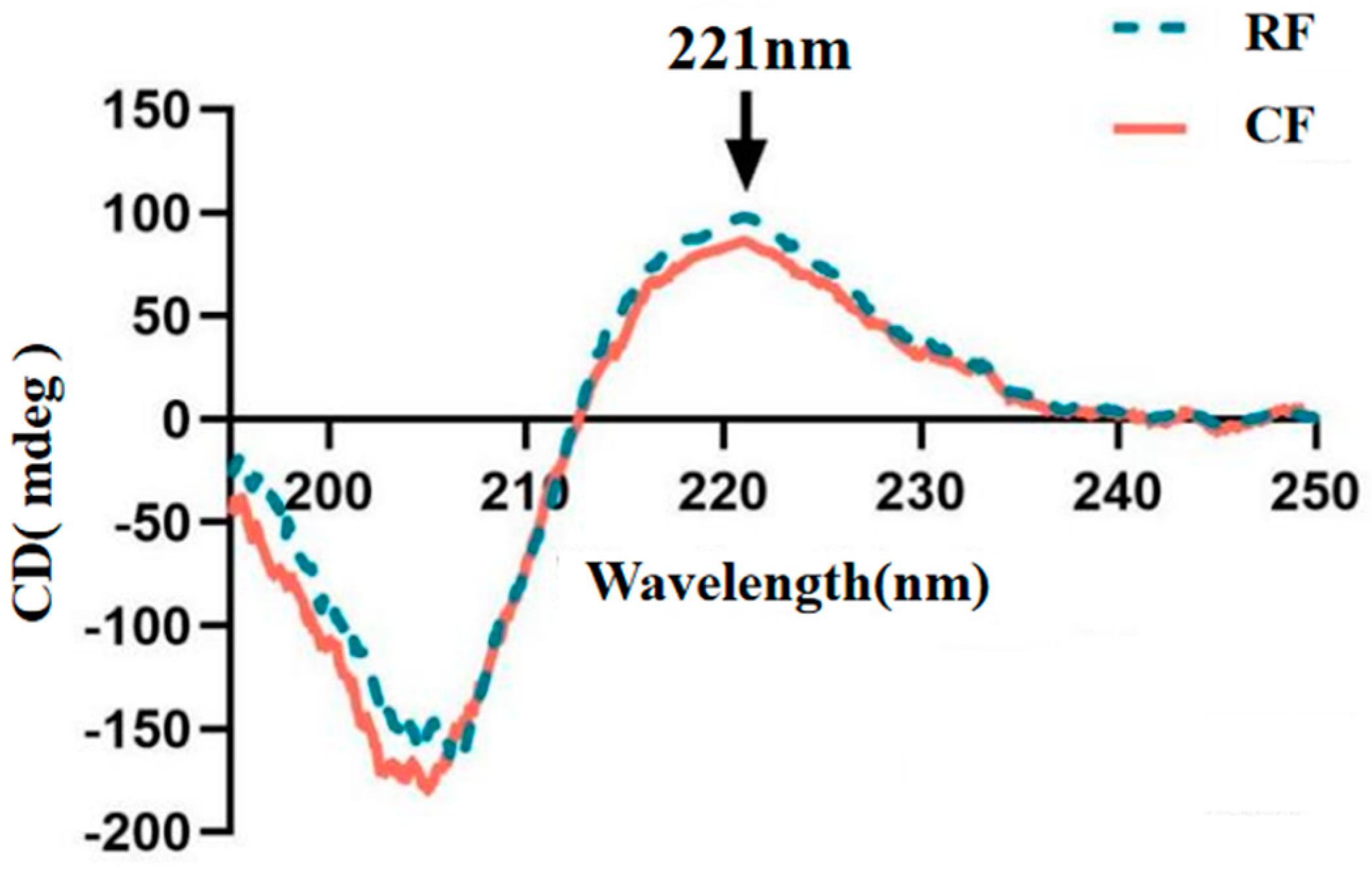
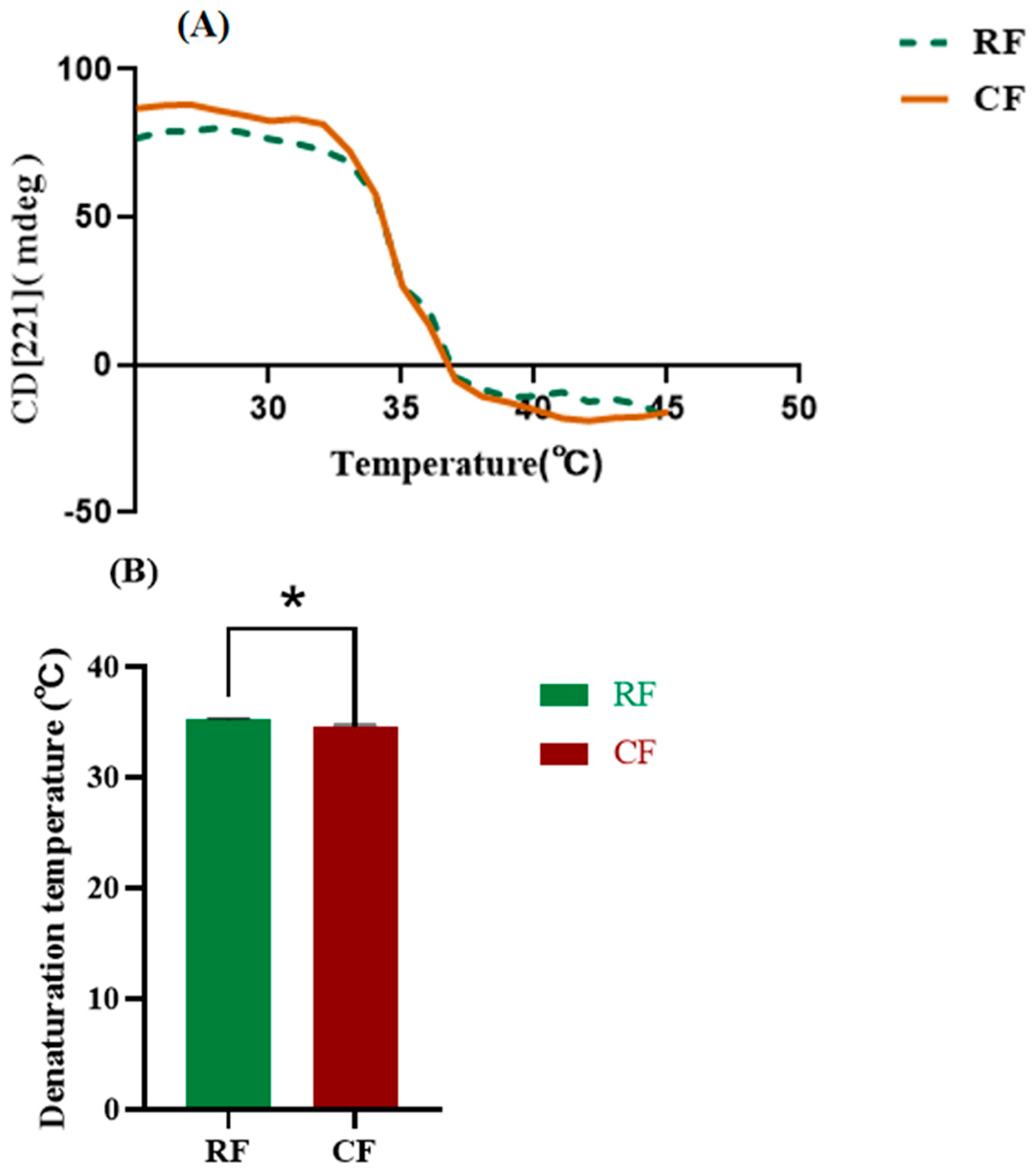
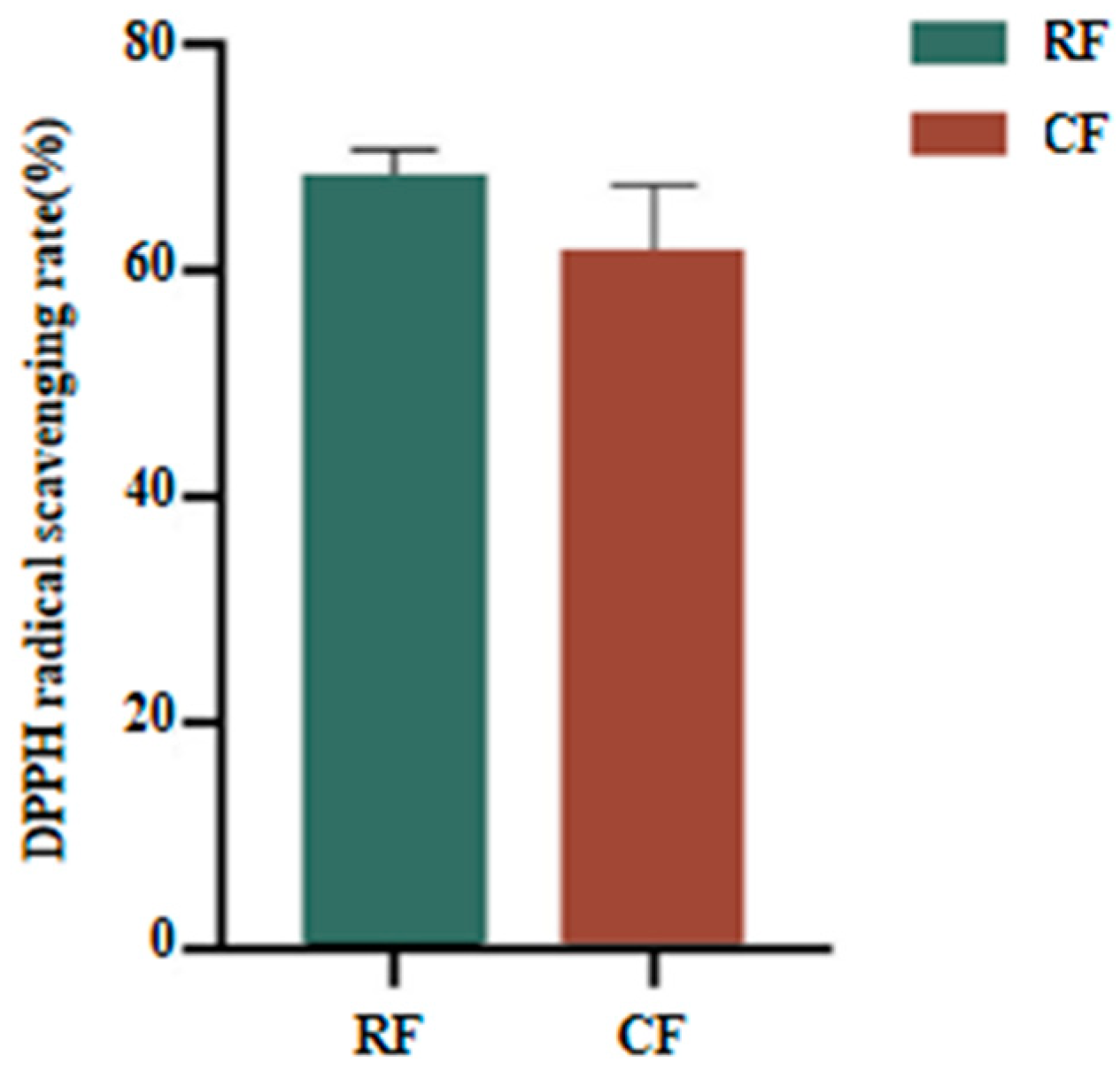
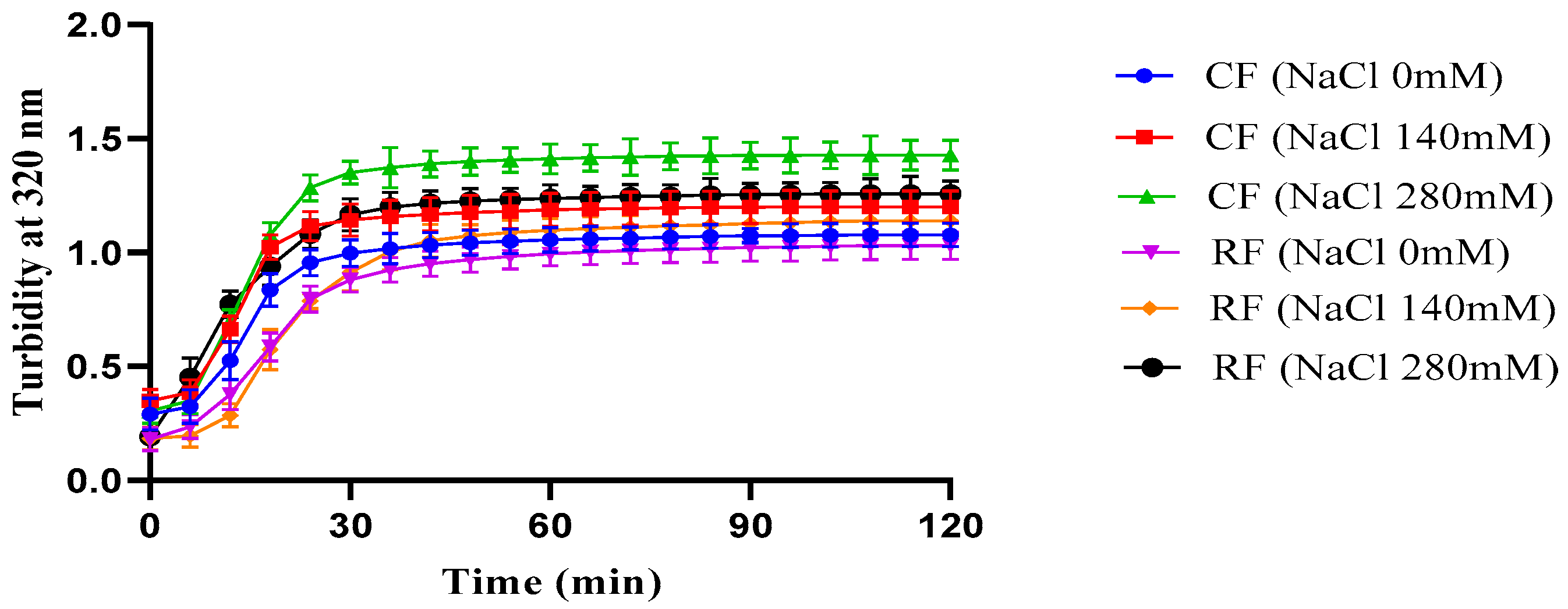
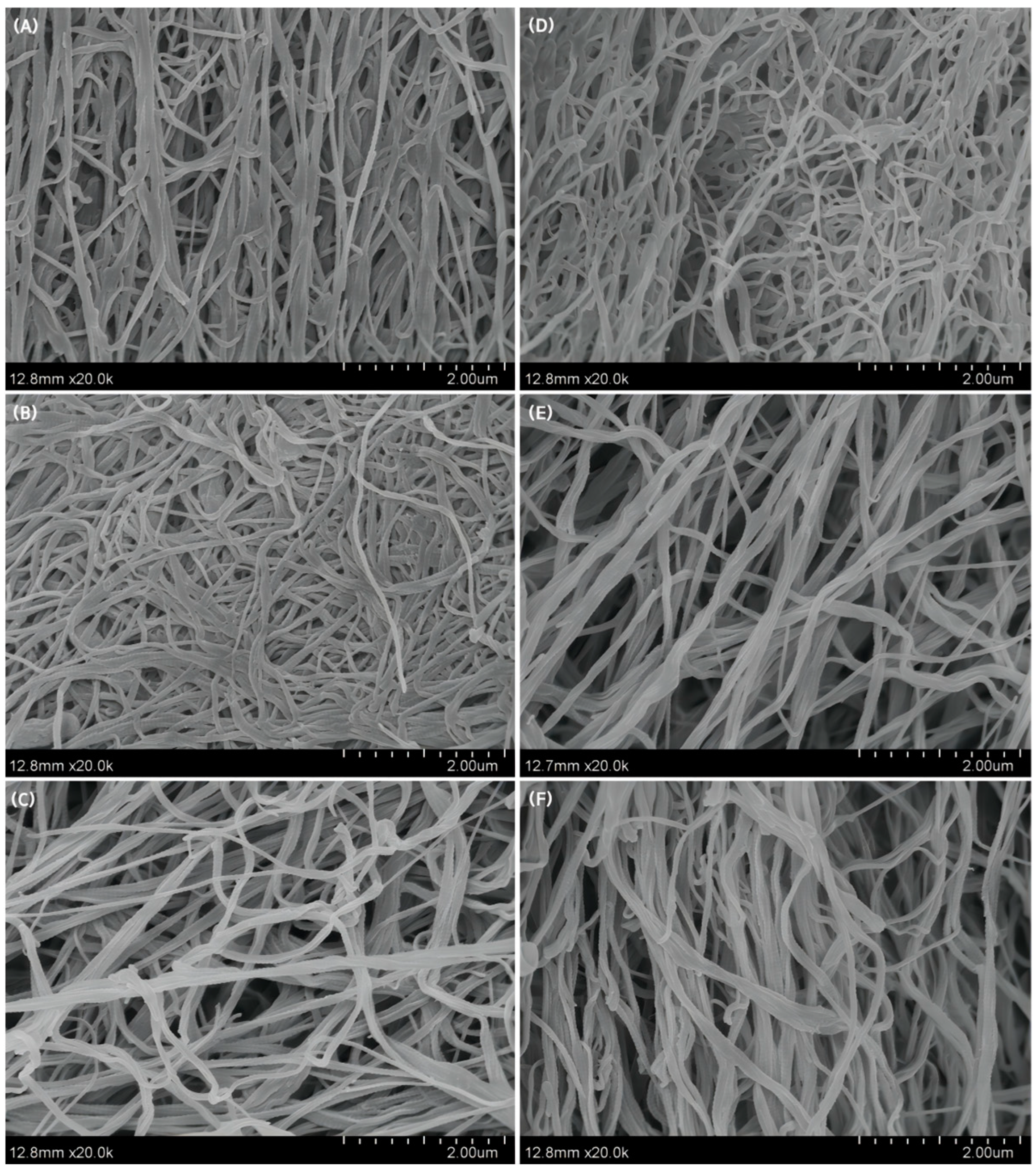

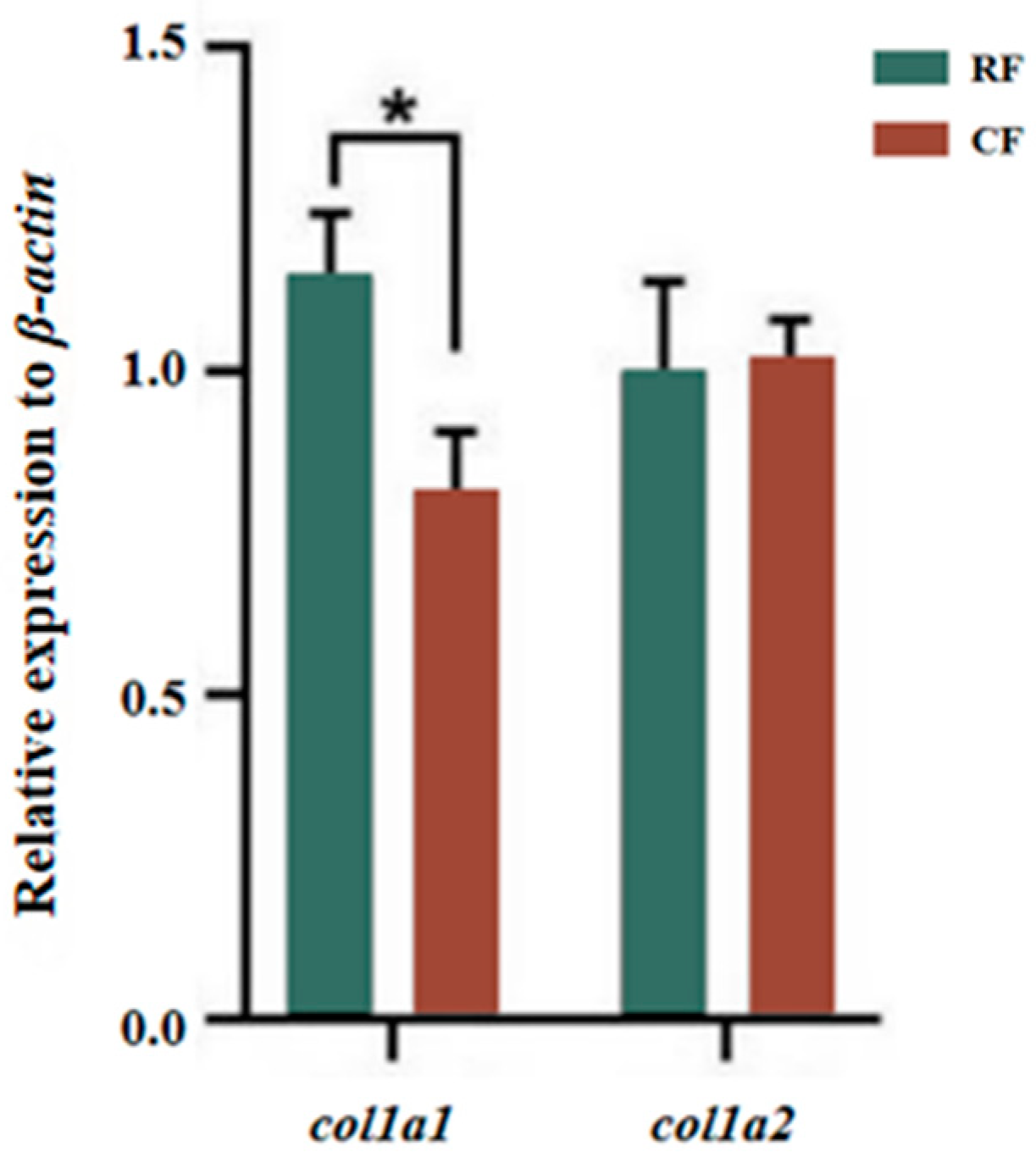
| Gene | Primer Sequence (5′-3′) |
|---|---|
| β-actin-F | GATCCGGTATGTGCAAGGCT |
| β-actin-R | TGCCAGATCTTCTCCATATCA |
| col1a1-F | AGCTTACCTTCTTGCGCCTT |
| col1a1-R | GACGCTGTATGTGAAACGGC |
| col1a2-F | ACAAGGAGTCTGCATGTCGG |
| col1a2-R | TATCTCCCCTTGGTCCCGAT |
Disclaimer/Publisher’s Note: The statements, opinions and data contained in all publications are solely those of the individual author(s) and contributor(s) and not of MDPI and/or the editor(s). MDPI and/or the editor(s) disclaim responsibility for any injury to people or property resulting from any ideas, methods, instructions or products referred to in the content. |
© 2024 by the authors. Licensee MDPI, Basel, Switzerland. This article is an open access article distributed under the terms and conditions of the Creative Commons Attribution (CC BY) license (https://creativecommons.org/licenses/by/4.0/).
Share and Cite
Zhang, Q.; Hou, S.; Liu, Y.; Du, J.; Jia, Y.; Yang, Q.; Xu, T.; Takagi, Y.; Li, D.; Zhang, X. Properties of Skin Collagen from Southern Catfish (Silurus meridionalis) Fed with Raw and Cooked Food. Foods 2024, 13, 2901. https://doi.org/10.3390/foods13182901
Zhang Q, Hou S, Liu Y, Du J, Jia Y, Yang Q, Xu T, Takagi Y, Li D, Zhang X. Properties of Skin Collagen from Southern Catfish (Silurus meridionalis) Fed with Raw and Cooked Food. Foods. 2024; 13(18):2901. https://doi.org/10.3390/foods13182901
Chicago/Turabian StyleZhang, Qi, Shufang Hou, Yanmei Liu, Jia Du, Yongkang Jia, Qiushi Yang, Tingting Xu, Yasuaki Takagi, Dapeng Li, and Xi Zhang. 2024. "Properties of Skin Collagen from Southern Catfish (Silurus meridionalis) Fed with Raw and Cooked Food" Foods 13, no. 18: 2901. https://doi.org/10.3390/foods13182901
APA StyleZhang, Q., Hou, S., Liu, Y., Du, J., Jia, Y., Yang, Q., Xu, T., Takagi, Y., Li, D., & Zhang, X. (2024). Properties of Skin Collagen from Southern Catfish (Silurus meridionalis) Fed with Raw and Cooked Food. Foods, 13(18), 2901. https://doi.org/10.3390/foods13182901







